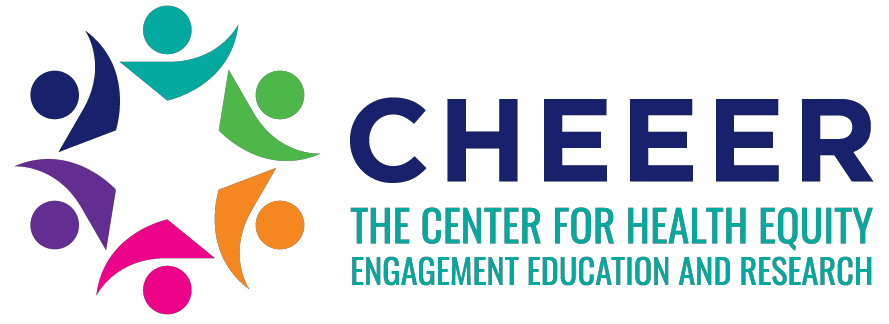Reference Links:
Check out new initiatives and research from MetroHealth and some of our partnering organizations that are engaged in public health and health disparity work.

Center for Health Care Research and Policy (CHRP)
The Case-MetroHealth Center for Health Care Research and Policy (CHRP) was established at MetroHealth in 1994 with a two-fold mission:
- Improve the health of the public by conducting research that examines access to health care, increases the quality and value of health care services, and provides evidence to inform health policy and practice; and
- Lead education and training programs that promote these goals.
Center faculty take special interest in these areas as they pertain to the health of urban and vulnerable populations. CHRP faculty collaborates widely with researchers in other departments in the Case School of Medicine, and with other Centers, Schools, and Departments at Case. Content areas of special focus are represented by research programs in Aging, Chronic Diseases, and Preventive Services. Methodologic studies and collaborative research support are provided by the Center’s Quality Resource Unit, Health Care Decision Making Unit, Biostatistics and Evaluation Unit, Health Economics Unit, and the Social and Behavioral Sciences Unit. CHRP faculty also serve as teachers and in leadership positions in federally-supported graduate training programs in Health Services Research (T32, AHRQ) and Clinical Investigation (K30, Roadmap KL2, NIH). The Center also uses its web site to collect data for clinical trials and surveys.

The Center for Community Solutions
“The Center for Community Solutions (est. 1913) is a nonpartisan think tank focused on solutions to health, social and economic issues. Community Solutions’ efforts are critical to the work and effectiveness of direct service organizations in Northeast Ohio.
These organizations use our data to identify changes in community demographics that will impact their services and identify the gaps and overlaps within these services. They use our analysis to better understand public policies that affect their work and develop advocacy agendas accordingly. They use our timely and affordable training programs to increase their knowledge in order to better serve their constituents. They use the networks and coalitions we offer to build a strong voice on behalf of the most vulnerable citizens in our community.
In addition to direct service organizations, funders, as well as policy makers, rely on our data and analysis to inform their decision-making, which can potentially impact all Ohioans.”
-Source:https://www.communitysolutions.com/about-ccs/

Cleveland Department of Public Health (CDPH)
“Cleveland Department of Public Health (CDPH) is the local public health agency for the City of Cleveland. Formally established in 1910, the department is charged with improving the quality of life in the City of Cleveland by promoting healthy behavior, protecting the environment, preventing disease, and making the City a healthy place to live, work, and play. The Cleveland Department of Public Health is made of a range of programs providing clinical, environmental, health promotion, and population-based services. The department has an annual budget of $21 million and is staffed by 180 full- and part-time employees.
CDPH ensures a high quality of resources and services through various partnerships in the greater Cleveland community. For example, CDPH has initiated and maintained working relationships with Case Western Reserve University, Metro Health Medical Center, Veterans Affairs Medical Center, Cuyahoga County Board of Health, Lakewood and Shaker Health Departments, the Center for Community Solutions and others. These partnerships provide the cornerstone of successful preventive public health care services to meet the needs of the residents of the City of Cleveland and throughout the Greater Cleveland community.”
-Source:http://www.clevelandhealth.org/about.php
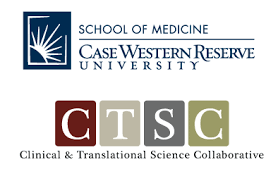
Clinical and Translational Science Collaborative (CTSC)
“The Clinical and Translational Science Collaborative (CTSC) of Cleveland, a collaborative among Case Western Reserve University (CWRU) and its affiliated hospital systems, the Cleveland Clinic (CC), MetroHealth (MH), University Hospitals (UH), and the Louis Stokes Veterans Administration Medical Center (VA) aspires to be a catalyst for high quality clinical and translational (C/T) research both locally and nationally by changing the culture and environment of biomedical research, sharing resources and expertise, and streamlining the research process to move translational research from bench to bedside and to the community.”
-Source:https://case.edu/medicine/ctsc/about-us

Community Voices
“Established in 1998, Community Voices: Healthcare for the Underserved (CV) is a division of the Satcher Health Leadership Institute at Morehouse School of Medicine. CV is a dynamic advocate for change in pursuit of one simple goal – a healthier America. While programs and activities are diverse, the core focus remains sharp: build stronger communities by strengthening the health of families. The organization’s mission is to listen to voices in the community that often go unheard and take an active leadership role in improving health for all.”
-Source:https://communityvoices.org/about

HDPulse
HDPulse is designed to provide access to data and interventions related to minority health and health disparities. It offers resources to identify, prioritize, and mitigate health disparities.
HDPulse consists of two portals: (1) a Data Portal that includes population data, with applications for calculating and mapping health disparities data, and (2) an Interventions Portal that provides access to intervention research studies with accompanying tools and materials. The HDPulse web portal facilitates research studies central to NIMHD’s mission and is a valuable resource to the minority health and health disparities research community.

Healthy Northeast Ohio
“The Healthy Northeast Ohio website is intended to help community members and policy makers learn about the health of the community funded by the HealthComp Foundation. It provides local health data, resources, best practices, news articles and information about community events. In keeping with Cuyahoga County Board of Health, The Center for Health Affairs, and other partners’ mission and values, it is important that the site provides balanced information on a broad range of topics affecting the health of our community and highlights the assets in our community.”
–Source:http://www.healthyneo.org/tiles/index/display?alias=AboutUs_

Institute for Health Promotion Research
“Dr. Amelie G. Ramirez founded the Institute for Health Promotion Research (IHPR) in 2006 in the Department of Population Health Sciences at UT Health San Antonio, to bring together research, training, and education to improve Latino health.”
-Source:https://ihpr.uthscsa.edu/about/
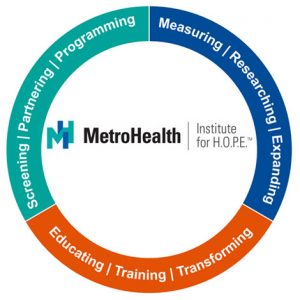
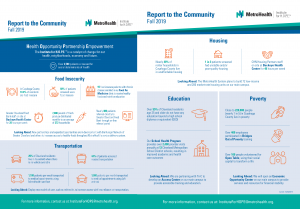
MetroHealth Medical System: Institute for H.O.P.E.™
A Coordinated, Strategic Approach
“A catalyst of change for our health, neighborhoods, economy and future.
Improving the health of the community is the core of MetroHealth’s mission. Part of that means continuing to deliver excellent medical care across the continuum of care – primary care, specialty medical and surgical care, hospital care and, when needed, life-saving interventions – all empowered by the latest technology and enhanced by our expertise in population health, managed care and quality improvement.
But we must also expand the reach of our care. We need to see the full picture of our patients and their lives, beyond our walls, so we can identify and help eliminate potential barriers to their health and well-being. We must find and fix the root causes of health disparities in our region.
That’s why MetroHealth’s Population Health Innovation Institute created and launched the Institute for H.O.P.E.™, to help improve health through opportunity, partnership and empowerment.”
The Institute for H.O.P.E.™ has three focus areas:
Healthy families and thriving communities – We will screen patients for social determinants of health and intervene when needed. We will create, improve and align programs to combat health disparities. And we will enrich community partnerships with entities on the front lines of community health and well-being.
Transformative knowledge and education – We will work to educate and train members of our community, transforming their lives and the lives of their families.
Innovative practices – Through research and evaluation, we will optimize the effort and create a template to spread H.O.P.E. to other communities.
-Source:https://www.metrohealth.org/institute-for-hope
New American Economy: Map the Impact
“New American Economy is a bipartisan research and advocacy organization fighting for smart federal, state, and local immigration policies that help grow our economy and create jobs for all Americans.”
–Source: https://www.newamericaneconomy.org/about/
Their “Map the Impact” feature is an interactive map that can be used to get comprehensive state and local immigration data.

Office of Minority Health
“The Office of Minority Health is dedicated to improving the health of racial and ethnic minority populations through the development of health policies and programs that will help eliminate health disparities.
The Office of Minority Health was created in 1986 as one of the most significant outcomes of the Secretary’s Task Force Report on Black and Minority Health (Heckler Report). This landmark report marked the first convening of a group of health experts by the U.S. government to conduct a comprehensive study of racial and ethnic minority health.”
–Source:https://minorityhealth.hhs.gov/omh/browse.aspx?lvl=1&lvlid=1

PhenX Toolkit
“The PhenX Toolkit (consensus measures for Phenotypes and eXposures) provides recommended standard data collection protocols for conducting biomedical research. The protocols are selected by Working Groups of domain experts using a consensus process, which includes the scientific community. The Toolkit provides detailed protocols for collecting data and tools to help investigators incorporate these protocols into their studies. Using protocols from the PhenX Toolkit facilitates cross-study analysis, potentially increasing the scientific impact of individual studies.”
–Source: https://www.phenxtoolkit.org/about


PHRASES
Changing the Terms of Engagement
“Forward-thinking public health professionals are reaching across sectors to build healthier communities. Recognizing that effective collaboration advances everyone’s mission, Public Health Reaching Across Sectors (PHRASES) supports an “all-hands-on-deck” approach with tools to build communication skills and strategies designed for success.”
“PHRASES provides public health practitioners with tools to build communication skills and strategies.”
“PHRASES is designed to improve the ability of public health professionals to communicate the impact and value of the public health field to other sectors in language that resonates and fosters cross-sector partnerships and alliances. Building on the recognition that key policy and programmatic decisions are too often made without the expertise of public health, PHRASES builds capacity among public health professionals to collaborate with other decision makers in order to achieve shared goals and objectives.”
“PHRASES is a joint project of the de Beaumont Foundation and the Aspen Institute’s Health, Medicine and Society Program.”

PolicyLink
“PolicyLink is a national research and action institute advancing racial and economic equity by Lifting Up What Works.®
To advance equity, PolicyLink advocates for groundbreaking policy changes that enable everyone, especially people of color, to be economically secure, live in healthy communities of opportunity, and benefit from a just society. PolicyLink is guided by the belief that the solutions to the nation’s challenges lie with those closest to these challenges: when the wisdom, voice, and experience of those traditionally absent from policymaking drive the process, profound policy transformations emerge.”
-Source:https://www.policylink.org/about-us/mission-statement
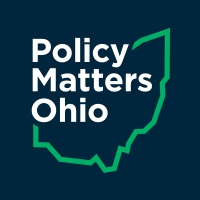
Policy Matters Ohio
Policy Matters Ohio, a non-profit policy research institute, creates a more vibrant, equitable, sustainable and inclusive Ohio through research, strategic communications, coalition building and policy advocacy.
Since 2000, Policy Matters has helped make Ohio a better place to live, work and raise a family.
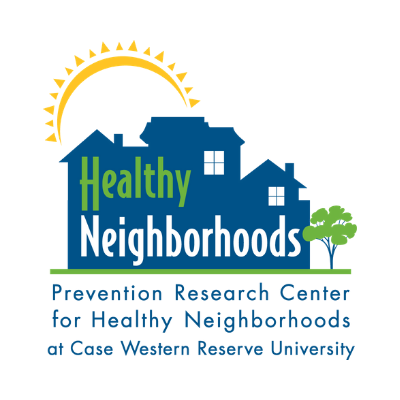
The Prevention Research Center for Healthy Neighborhoods (PRCHN)
“The PRCHN was established at the Case Western Reserve University School of Medicine in 2009. The Center’s mission is to foster partnerships within Cleveland’s urban neighborhoods for developing, testing, and implementing strategies to prevent and reduce the burden of chronic disease.”
-Source:https://www.prchn.org/AboutUs.aspx
Translational Science Benefits Model : Translating for Impact Toolkit |Washington University in St. Louis
“All nine tools in the Translating for Impact Toolkit are ready for you to use/pilot with your own research.For the best user experience and the ability to save your progress, we recommend you download the forms and complete them in Acrobat Reader.”
Need help charting your path through the toolkit

United Way 211
“United Way 2-1-1 connects individuals and families to social services 24 hours a day, every day of the year. We provide accurate and timely assessment, information and service navigation to help people understand their options, resolve problems and improve their lives. By informing the community of needs, gaps and trends, 2-1-1 facilitates system change.”
-Source:https://www.211oh.org/who-we-are/mission-and-vision
